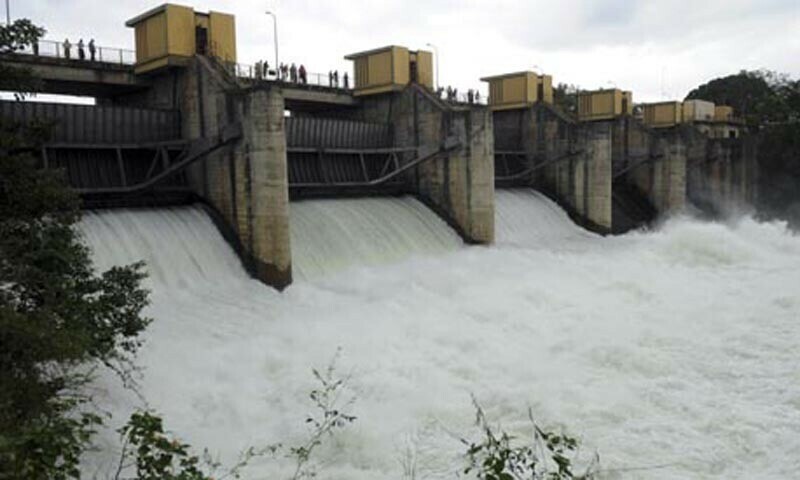Whether India will heed the counsel of global powers, including the United States, and how it will interpret Pakistan’s warning of a “swift, resolute and notch-up” response, as per the army chief, to any act of aggression remains unclear. Consequently, the risk of military escalation cannot be entirely ruled out despite intense diplomatic efforts aimed at averting a clash between the two nuclear-armed neighbours.
For Pakistan’s economic managers, this development presents a new and highly complex challenge. Should New Delhi move to divert water flows designated for Pakistan, managing an economy already strained by water shortages would become immensely difficult. Additionally, such a move would undermine the broader international diplomatic initiative aimed at preventing hostilities between the two countries.
The year 2025 is proving to be fraught with challenges on multiple fronts, and the issue of water availability has rightly emerged at the top of the national agenda. Fortunately, the Council of Common Interests (CCI) has eased apprehensions regarding any potential move to deprive Sindh of its rightful share of water, for now.
A swift and equitable resolution of water-related disputes along with accelerating export growth is necessary to navigate the shifting contours of South Asian geopolitics
Nevertheless, how Pakistan plans to cope with a projected 37 per cent water shortfall this year remains uncertain. The implications of this deficit are far-reaching — not only for agriculture but for the wider economy as well.
The second major challenge facing the country is the urgent need to revive industrial production. Output in the large-scale manufacturing (LSM) sector has contracted during the first eight months of the fiscal year due to a range of factors, including elevated energy prices, high interest rates, weak governance, persistent political instability, and deep-rooted structural issues in key industries — most notably textiles, the country’s leading job creator and foreign exchange earner.
The State Bank may reduce the policy rate in the monetary policy meeting scheduled to be held today (May 5). However, considering the scale of the industrial slowdown, such modest monetary easing is unlikely to generate a meaningful revival in industrial activity in the short term.
With LSM output declining by 1.9pc year-on-year during July-February FY25, a reversal of this trend — even a 1pc increase in the full fiscal year 2024-25 — seems improbable. Meanwhile, fiscal space remains severely constrained. Should a military conflict erupt with India, there would be virtually no fiscal capacity left to support industrial recovery. The situation is, by any standard, deeply concerning.
The implications of the 37pc water shortfall this year will have far-reaching implications for the agriculture sector and the wider economy
In its half-yearly economic report, the SBP has raised concerns about consistent declines in exports as a share of GDP, the inability of foreign direct investment to enhance economic productivity, poor integration of Pakistan’s industrial base into global value chains, and low labour productivity in the manufacturing sector.
On a microeconomic level, this is manifested in the substandard quality of goods, high per-unit production costs, and the persistent failure to establish internationally competitive brands.
Thus, even if there is some marginal recovery in industrial output during the remainder of the fiscal year, it is unlikely to result in a substantial uptick in exports. As it stands, the gains recorded in the current account this year are unlikely to be sustainable in the next, even in the best-case scenario where India refrains from aggressive actions. This presents a serious policy concern.
Both the government and the private sector stakeholders should collaborate in devising and implementing practical strategies to accelerate industrial revival and enhance export performance. Furthermore, the federal and provincial governments must approach the issue of inter-provincial water distribution with a spirit of fairness, working through the CCI to forge a sustainable solution.
Time is of the essence. A swift and equitable resolution of water-related disputes is necessary to improve the country’s political climate. Simultaneously, accelerating export growth would reduce Pakistan’s reliance on external financial support, especially amid the shifting contours of South Asian geopolitics.
Together, progress in these two areas could deliver modest but meaningful growth in the agricultural and industrial sectors at a time when millions of citizens remain unemployed and live below the poverty line. From a national security perspective, such socioeconomic vulnerability poses additional risks by nurturing extremist ideologies that may lead to militancy.
The International Monetary Fund is expected to approve the release of the second tranche of its $7 billion programme — amounting to $1bn — and supplement it with an additional $1.3bn in climate financing. Pakistan has largely fulfilled the conditions required for both disbursements.
If these funds, totalling $2.3bn, are released shortly, they would provide critical support in maintaining foreign exchange reserves and meeting our external debt obligations. And in times of geopolitical uncertainty, stable foreign reserves are not just an economic necessity; they are a strategic imperative.
Published in Dawn, The Business and Finance Weekly, May 5th, 2025


